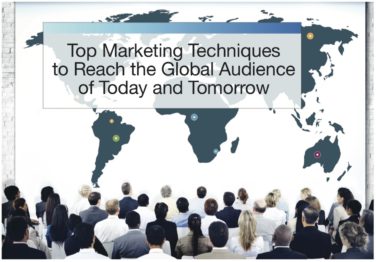We asked both brand managers and agency representatives to weigh in on the process that goes into selecting an agency (or wooing a client), as well as the keys to forming a great working relationship once that decision is made.
The opinions expressed by the authors in the Think Tank section are their own and do not necessarily reflect those of their affiliated companies or organizations.
Associate Director, Pain Care Marketing
CNS Business Unit, Teva Pharmaceuticals
Bill.M.Smith@tevapharm.com
Attributes of a Good Agency
Besides possessing the staff and resources to handle the workload, what’s really critical is the personal relationship that develops between the brand team and the agency. When looking for a new agency it’s best to get a sense of the personality fi t between members, and to see whether an agency is comfortable enough to challenge your team’s opinion and voice their perspective. This business is demanding and you’ve got to have a relationship with your agency that’s strong enough to withstand all the challenges that come along.
The Evaluation Process
Agency Request for Proposals (RFPs) and pitches are not necessarily the best way to evaluate if an agency has what it takes to deliver for your brand. Pitches that include spec creative are definitely insightful, often entertaining, but rarely does that work ever make it to the marketplace.
From a creative standpoint, you can get a sense of an agency’s capabilities by taking a good look at their past work. If they’ve got a number of terrific campaigns across a range of products, chances are they can produce good creative work for your brand.
On the strategic and planning side, there’s really no better way to judge an agency than to sit down and work with them. Share your thinking and see what insights they glean from the discussion. Present your challenges and listen carefully to the questions they ask. Spend up to a day in a work session with them. You may not end up with a definite solution to your challenge, but you’ll probably learn more about their strategic sense than if you put them through a full pitch.
**
Partner and CMO
HCB Health
Nancy.Beesley@hcbhealth.com
Finding the Perfect Fit
There are many similarities between dating and new business. On paper, an agency might be a perfect match for a client, but clients aren’t buying processes or secret sauces—they’re buying people. Both parties have to like each other. Chemistry is primal.
Creativity is key, too. Engaging with a creative agency lets pharma and device marketers stretch their thinking and see new possibilities. Companies also want people who are knowledgeable and as genuinely engaged in their business as they are. Marketers want their agencies to have their backs and make them look good.
Benefits Beyond Great Creative
The important thing is to have a relationship that promotes open discourse. Instead of an “open-door policy,” there should be a “no door” policy where everyone is in the same room together. This is particularly true with device companies, which require an unmatched level of immersion in their technology and first-hand knowledge of how their products perform in the field.
Keys to Great Relationships
Honesty and trust: Instead of giving a client a longwinded explanation of why a concept presentation needs to be delayed, just say, “I don’t think we’ve nailed it yet.” Nine times out of 10, the client will be grateful. If a client is making a bad decision, tell them. If an agency is wrong on a strategy, tell them. Agencies and clients should stand for each other both privately and publicly. When there’s complete honesty and trust, everybody reaps the benefits of a great relationship.
**

VP, Customer Solutions
Cadient Group
Barry.Winn@cadient.com
The keys to a successful agency-client relationship are based upon two fundamentals: 1) An agency’s ability to innovate its clients’ business, not just produce work; and 2) A strong, sustainable relationship based on trust, honesty and friendship.
The mainstay of agency-client relationships is based on ideas—not just about creative or copy. Beyond the daily planning, creation and execution, a great agency, in tandem with its client, builds a roadmap for developing new approaches to the transactions that drive their business.
But this can’t happen in a vacuum; it’s the responsibility of the entire team to produce new and proven ways to reach target customers with the brand message. Both teams need to be able to explore, share, and speak freely, allowing fresh ideas and original thinking to emerge. And that can only happen where trust, honesty and friendship coexist. Conversely, as innovation flourishes, these elements grow.
Agencies and clients can energize their work—and their relationships—by establishing an “innovation quota.” This means scheduling time to talk about new ideas, possibilities and the items on your wish list. Like weekly status calls and med-legal reviews, innovation meetings should be placed on the calendar, with agendas and follow-up action items. Both teams should work together to learn about new and emerging strategies and tactics, sharing accountability and education.
Collaborative innovation has fueled some of the best and most groundbreaking agency-client relationships. When both challenge themselves to create together, that collaboration becomes the foundation of a thriving, long-term partnership.
**
Executive Vice President, Director of Client Services
Concentric Pharma
jfischette@concentricpharma.com
When engaging with a potential client, start by listening. Every interaction should be designed to truly understand their culture, the goals for the particular product or service, and what they are looking for in a partner.
Healthcare companies have always looked for three things: Collaboration, chemistry and trust. What has changed is that in today’s environment internal brand teams are shrinking, so it’s more important than ever that an agency raise their level of collaboration to that of a true partner—to be able to act as an extension of the brand team and coordinate with other agencies on board, both strategically and tactically.
This is an important distinction because today, brands need a partner who can manage the strategic coordination of the promotional ecosystem across channels and customers. Demonstrating an agency’s strong tactical coordination is no longer enough. It is no longer about bringing together a fl ash card from one agency and a detail aid from another. While that is certainly an important skill set, it is not what makes for a vested partnership in today’s market.
Healthcare brands are looking for a holistic approach to their product or service. They need a clear brand vision that can be created by combining their goals with knowledge of the marketplace. Oftentimes, in order to achieve that vision, an agency will need to challenge deeply held assumptions so that innovative ideas can spring to life.
This commitment to strategic collaboration has become a must have as healthcare brands evaluate potential agency partners, and it will only become more important as the industry continues to navigate the changing landscape for years to come.
**
Associate Director, Digital Strategy and Communications
Millennium: The Takeda Oncology Company
Twitter:@POConnelly
The way pharma companies select partner agencies has been an evolving mix of good and bad practices to get to the end goal of driving corporate objectives. Rigorous request and evaluation processes (on both sides) that follow a path of tactical approaches, as opposed to one of strategic vision, have made it harder to find the right fit. Nowhere is this more critical than when selecting a digital agency.
The key when partnering with a digital agency is to ensure they not only understand the pharma industry inside and out but that they also have all the key elements necessary to bring thought leadership and innovation to your product, marketing, and corporate goals. With the pharma space moving at a rapid pace, balancing new media and innovations with the critical guardrails has never been more vital. You need an agency that can watch your back while keeping an eye on that entire ecosystem.
Another major component when selecting an agency is understanding how they will fit within the culture of your department and your broader organization. Finding an agency that understands “how you tick” is critical to the effectiveness of your efforts. They will be seen as an extension of you, so it is essential an agency understands your value system. You don’t want to select one just on the basis of their work, but one that can also be a partner—one that can provide recommendations based on performance data and not just sell the next shiny toy calling it innovation. The greatest opportunity for growth comes from a collaboration where an agency takes on a leadership role and provides strategic thinking and vision across the entire enterprise.
**
Marketing Director
Herceptin and Pertuzumab
Genentech
rizvi.qasim@gene.com
Clients can find the right agency through a comprehensive evaluation process. The RFP is a critical first step. Not only does it force the client to think about exactly what they need, but it also provides guidance and direction for the agencies being considered. These documents and exercises may also explain how an agency positions itself, as well as how it thinks both strategically and creatively, but that’s only a fraction of what a brand should be looking for.
Cultural Match
Visit the agency and let them introduce you to its space, the people, and the work (and vice-versa). The brand should send a creative brief over and sit in as the agency team reviews the document and discusses initial strategies and areas worth exploring. Then have lunch or go to an event together. Try to figure out if the culture, people, and work fit the brand.
Credentials and Experience
Asking to see an agency’s work, however, is a waste of time. Just Google it. Great marketing will get noticed and show up in all search engines. Instead, ensure that the agency partner not only has the competencies to deliver the final product but also understands the complexities of what it takes for that brand to be successful. And when it comes to experience, look laterally. Direct experience or work with a competitor is generally preferred, but it’s safe. Broad and lateral experience is a great way to inject innovation and freshen up a brand’s marketing.
The Working Relationship
Work is not created in silos—it’s a team effort. You must be confident that the relationship is as strong as the work and that the agency is truly acting on your behalf. Mistakes will happen regardless—but if you like, trust, and believe in the people you work with then you can overcome any challenge.
**
President and CEO
Klick Health
lsegal@klick.com
When it comes to a great client-agency relationship, there are five key criteria:
1) No Surprises.Predictability and consistency are achieved through mature processes and a seasoned team that is transparent throughout the engagement lifecycle. Ask to see the process documents and establish clear rules of engagement for how to communicate any potential challenges.
2) Demand the A-Team. You need to have zero tolerance for BS—bait and switch. Selling with an A-team and then switching to a junior B-team will lead to major disappointments. Ensure you meet the team and confirm their allocation for the duration of the engagement. Also, get a sense of how long the team has been working together—relationships take time to marinate.
3) Growth Matters. In the agency world, organic growth is the dominant factor in keeping top talent engaged, as growth fuels professional and creative opportunities. Since your results are ultimately a function of your talent’s strength and engagement level, you want an agency that is continuously growing.
4) Evidence-based. To optimize your performance you need the right mix of experience and an obsession with measurement. In the digital age, it’s all about using data to systematically optimize performance.
5) Master orchestrators. Great relationships are built on achieving results. The increasing complexity demands an agency that is designed to orchestrate all the moving parts and help you with the agency-interaction model. A group that isn’t silo’d or at the mercy of multiple P&L’s. Ultimately, you want a single point of accountability. And remember, say no to BS!












